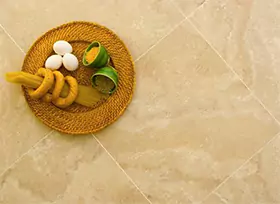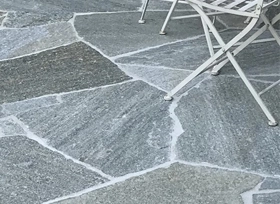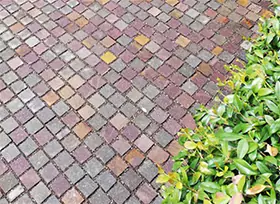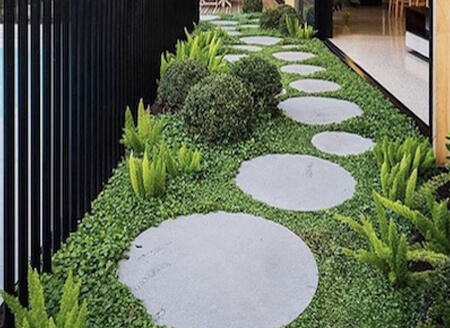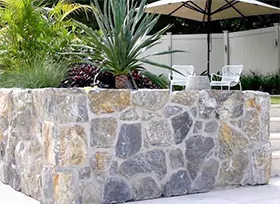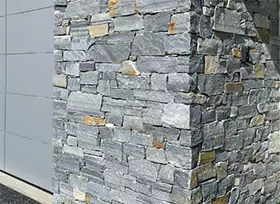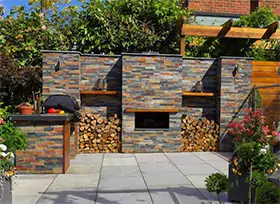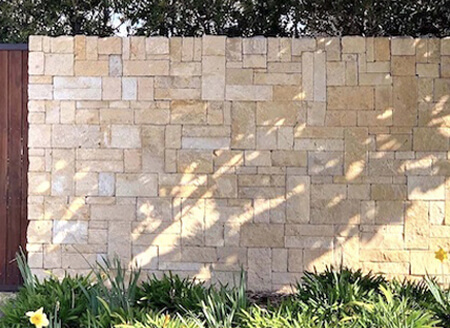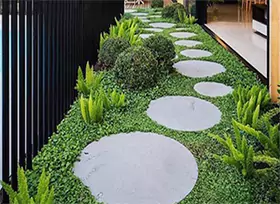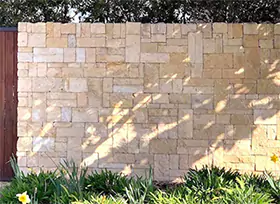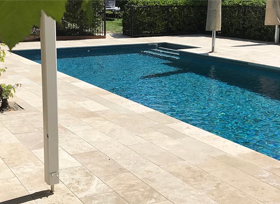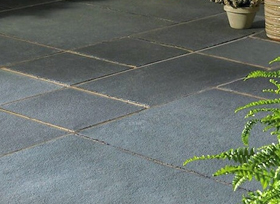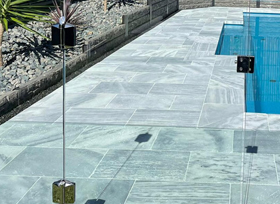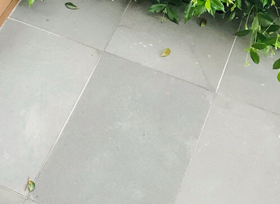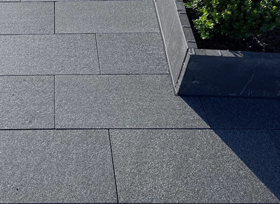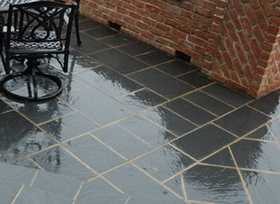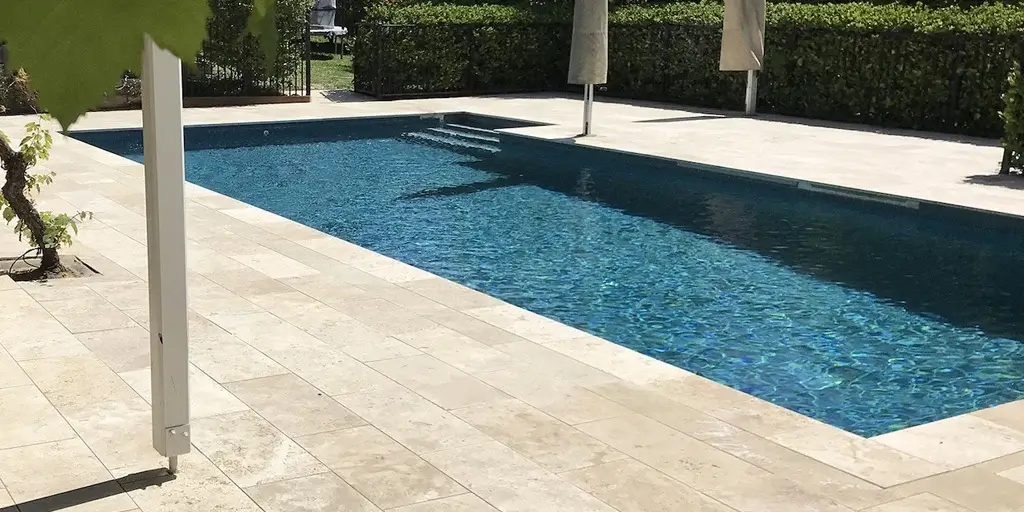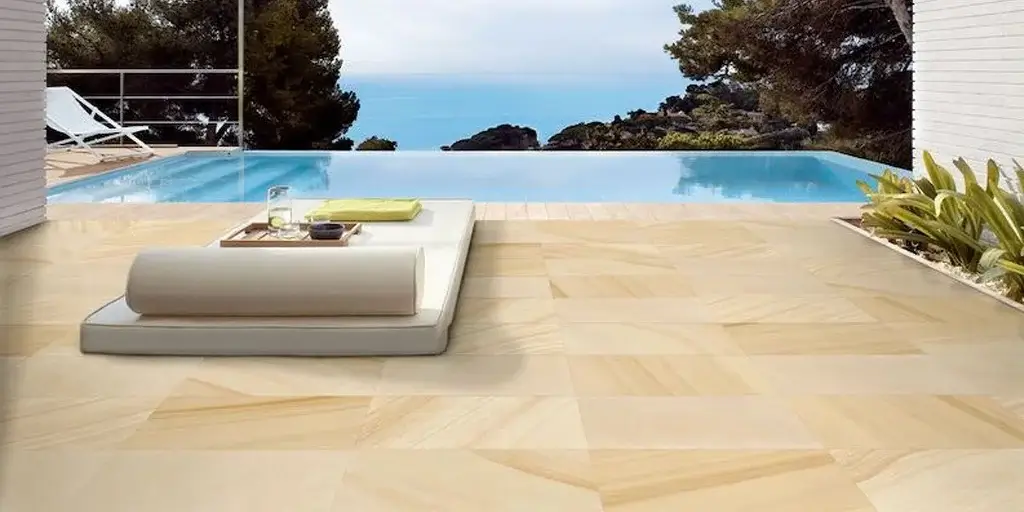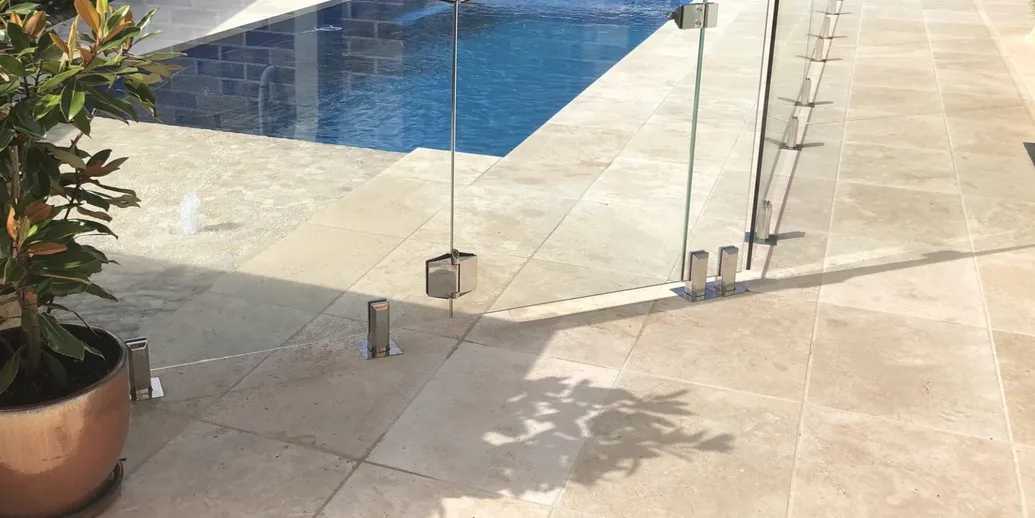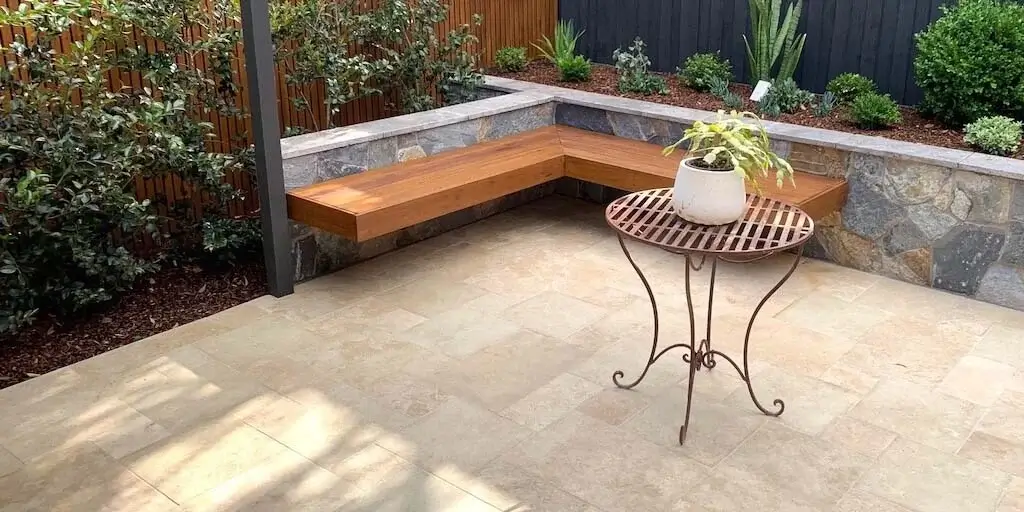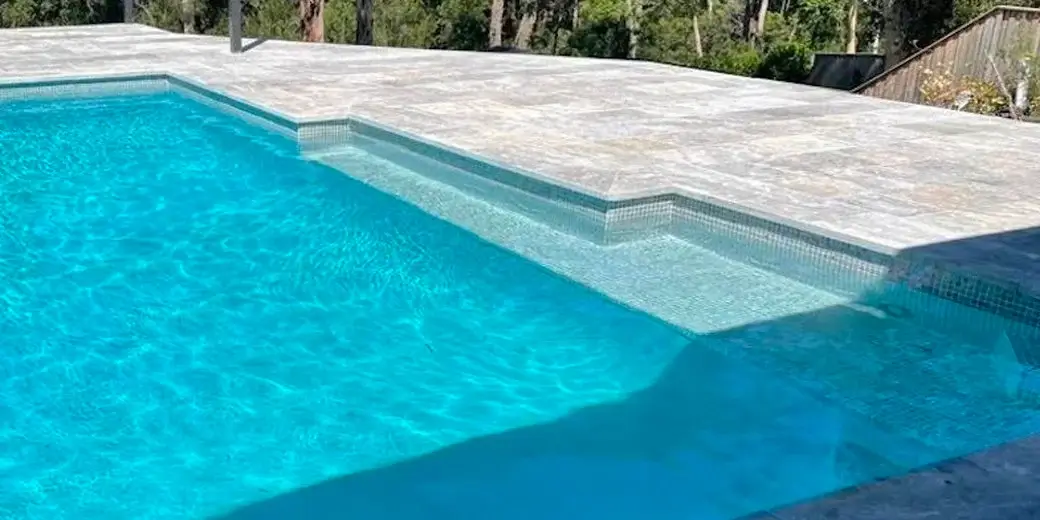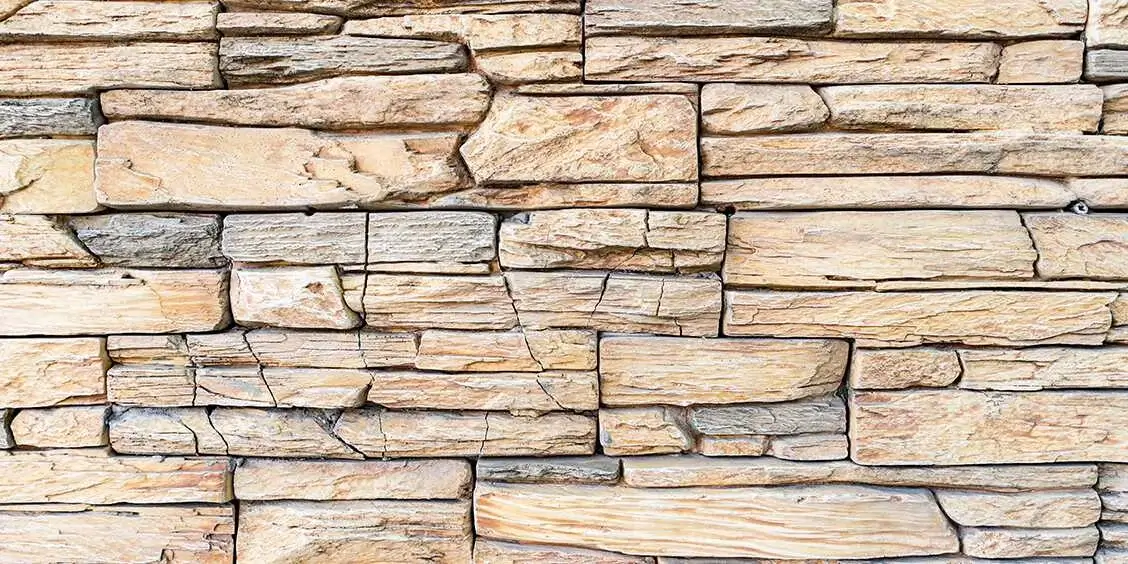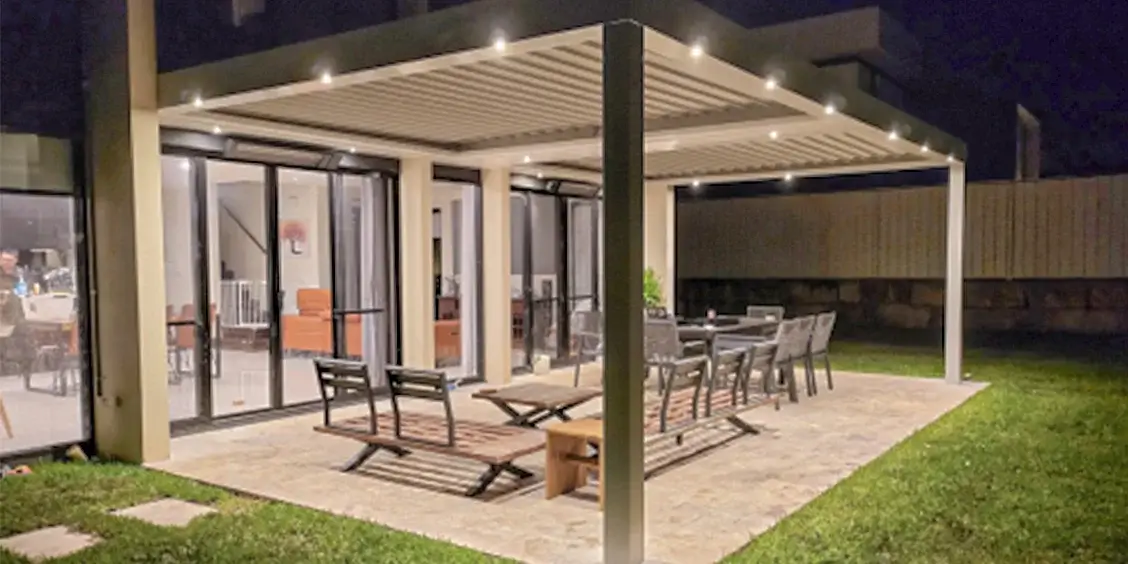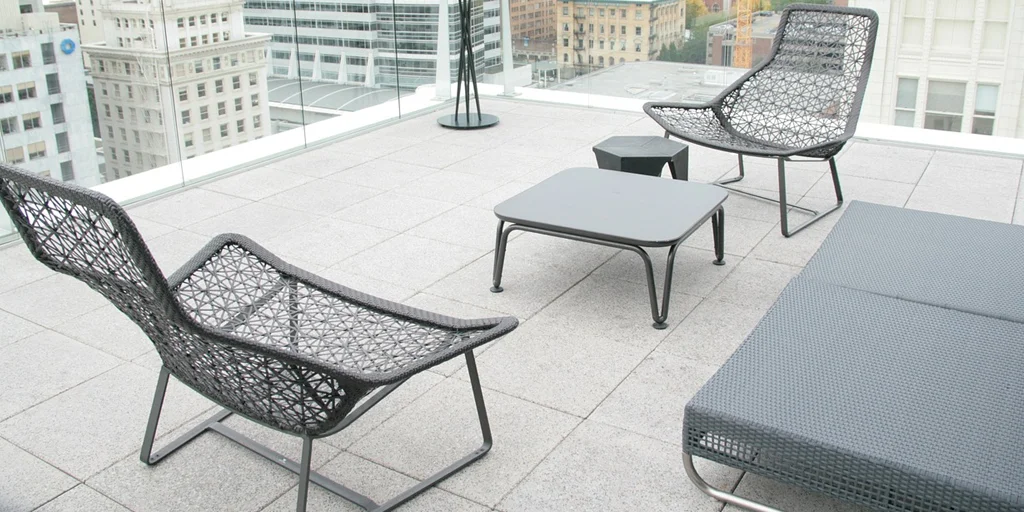Tiles are a standard option for boosting the aesthetic value and practicality of outdoor environments. Outdoor walls and floor tiles are essential in transforming a dull exterior into a beautiful, warm space. However, the distinction between outdoor floor tiles and wall tiles must be made clear. They have been specifically created to satisfy the particular demands of the applications they are suited to. An in-depth discussion of outdoor tiling and an examination of the distinctions between outdoor floor tiles and wall tiles are included in this comprehensive manual. Knowing these pointers, you'll be better positioned to plan and renovate your outside spaces.
Understanding the subtle differences between outdoor floor tiles and wall tiles is essential for natural stone wholesalers. When choosing materials, each type has a specific function in outdoor design and necessitates careful thought. From the viewpoint of a natural stone distributor, we will examine the distinctions between outdoor floor tiles and wall tiles in this extensive blog post. Knowledge of these variations can help professionals and homeowners choose the ideal tiles for their outdoor settings.
I. Understanding Outdoor Floor
A. Material Composition- Strength and Durability
- Slip Resistance
Outdoor floor tiles must withstand inclement weather and heavy foot activity. Outdoor floor tiles must be solid and durable to handle the difficulties presented by severe weather conditions and heavy foot traffic. We provide a broad selection of choices that satisfy these specifications as a distributor of natural stone. For instance, porcelain tiles are renowned for their extraordinary strength and durability. High temperatures are used throughout the firing process to create a dense, resilient tile that can withstand heavy weights and lousy weather. The inherent durability and strength of natural stone tiles such as Granite, Limestone and Travertine make them excellent options for outdoor tiles used for flooring.
The slip resistance of outdoor tiles is an important consideration. Outdoor spaces are likelier to become slick, especially when exposed to water from pools, sprinklers or rain. Selecting outdoor floor tiles with increased slide resistance is crucial to boost safety and lower the chance of accidents. Natural stone have textured finishes or surfaces that improve traction and grip even when wet. Depending on the intended level of slip resistance, the texture can range from a barely noticeable raised pattern to a more obvious relief. You can guarantee people using the outdoor floor are safe even when it's wet by choosing tiles with improved slide resistance.
- Size and Thickness
Compared to wall tiles, outdoor floor tiles have more thickness. They must be thicker to boost their strength and longevity, support big loads, and sustain pressure without breaking or cracking. As they offer additional stability and support, thicker tiles are appropriate for high foot traffic areas and places where heavy furniture and equipment may be used. Additionally, larger tile sizes are frequently used to lay outdoor floors since they produce a smooth and attractive surface. Fewer grout lines are necessary due to the larger format, giving the area a cleaner and roomier appearance. Additionally, bigger tiles might reduce water penetration and improve cleaning effectiveness. You may ensure this by selecting outdoor tiles for flooring with the right size and thickness.
- Stain and Weather Resistance
- Ease of Cleaning
To endure the harsh outdoor environment, including exposure to UV rays, rain, ice and other weather elements, outdoor floor tiles are specifically designed. The excellent stain resistance of these tiles ensures that they keep their spotless appearance even in outdoor settings where spills and mishaps may happen. The employed materials, such as natural stones, have qualities that make them less prone to discoloration. Manufacturers frequently apply protective sealants to improve outdoor floor tiles' stain resistance further. Cleaning and maintenance are simpler since this barrier prevents liquids and other things from reaching the tile surface.
Outdoor floor tiles are made to deflect dirt and debris, making cleaning and upkeep relatively simple. Their slick, non-porous surfaces prevent dirt from significantly clinging, making routine sweeping or light washing the only methods required for eradication. Most of the time, water and a light detergent or pH-neutral solution is enough to clean the tiles again. However, it's crucial to refrain from using abrasive cleaners or products that can harm the tiles' surface. Outdoor floor tiles can maintain their aesthetic value and practicality for longer by adhering to the manufacturer's cleaning and maintenance instructions.
II. Exploring Outdoor Wall Tiles
A. Material Composition:- Lightweight and Aesthetic Appeal
- Porosity and Water Resistance
Unlike floor tiles, which must sustain heavy loads, outdoor wall tiles are made to be lighter in weight. Their modest weight makes them easier to handle during installation and offers more design flexibility. We provide many options for outdoor wall tiles as a natural stone distributor, including Travertine, Sandstone, Limestone, Granite, Slatestone and Bluestone. Outdoor settings benefit from each material's own aesthetic appeal and feel. A flexible and affordable option, ceramic and porcelain wall tiles come in various hues, patterns and textures to suit various design tastes. Outdoor walls look more opulent and sophisticated when using natural stone tiles made of Marble, Slate or Sandstone.
Outdoor wall tiles have water-resistant qualities to endure rain and humidity, although frequently being more porous than floor tiles. Wall tiles are exposed mainly to vertical factors and have less need for high-density materials. Still, floor tiles are susceptible to direct foot traffic and require lower porosity to resist water penetration. But choosing wall tiles with the right porosity and water resistance is crucial, especially in locations with frequent heavy downpours or high humidity. Natural stone wall tiles can be sealed to increase their water resistance and safeguard them from harm caused by moisture. The durability and lifespan of outdoor wall tiles in outdoor situations are ensured by proper installation methods, including using suitable adhesives and grouts.
- Visual Appeal
- Smaller Size and Thickness
The various design options offered by outdoor wall tiles make it possible to improve the appearance of exterior walls. They provide a wide variety of colour, pattern and texture possibilities, enabling designers and homeowners to create distinctive and eye-catching outdoor areas. Wall tiles are available in a variety of colours to match various architectural types and individual preferences, from bright and dramatic hues to subtle and earthy tones. Outdoor walls gain depth and visual interest thanks to the availability of numerous patterns, including geometric shapes, mosaic themes and natural stone veining. The choice of texture also greatly impacts how the room looks and feels in general. Different wall tile finishes, such as polished, honed or textured surfaces, can create various looks.
Compared to floor tiles, outdoor wall tiles are often thinner and smaller. The smaller size and thinner thickness of wall tiles are adequate for their intended use because they are not required to carry the same loads as floor tiles. The smaller format provides more creative freedom in design because it supports complicated installations and patterns. Additionally, the smaller size simplifies installation and offers greater flexibility for designing aesthetically pleasing arrangements. Wall tiles' decreased thickness helps them weigh less, making them easier to handle during installation. It is significant to note that despite being thinner, wall tiles are still produced to maintain the durability and structural integrity required for outdoor applications.
Conclusion
Despite some material compositional similarities, outdoor floor tiles and wall tiles differ greatly in terms of texture, style, durability and upkeep. To ensure lifespan and functionality, choosing the appropriate tile for each application is essential. You may select the ideal outdoor tiles for your spaces by considering material composition, slip resistance, water resistance, design and maintenance requirements. Keep in mind that a well-planned and well tiled outside space may increase the curb appeal and value of your home while also creating a cosy space for you and your visitors to enjoy.
*Disclaimer: All information and advice given above in the blog are to the best of our knowledge. Please reconfirm at your end before execution.




